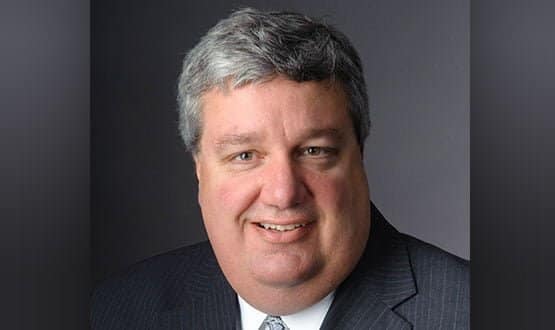Cerner says NHS on digital ‘tipping point’
- 24 April 2012

Jeff Townsend, Cerner’s executive vice president, chief of staff, is the man responsible for Cerner’s UK operations and the firm’s shift to the brave new world of cloud computing services and apps-like development.
Townsend explained to EHI how Cerner is rewriting its old play book and basing its next generation Millennium+ product on cloud services computing.
“It is a gamble but it’s one we think is the right move,” says Townsend. His 30 year career at Cerner has included being chief engineering officer, overseeing the product development of the current generation Cerner Millennium. “I’m spending more of my time on cloud-based services.”
‘Cerner 2.0’ underway
The ‘Cerner 2.0’ approach includes the integration of cloud-based services and mobile clinical applications, beginning with PowerChart+ Touch the first Cerner software natively developed for the iPad.
Townsend says that Cerner’s iPad application demonstrates what is possible with an app model of software development that extensively uses cloud-based services and development frameworks. “The iPad app shows how you can quickly innovate and distribute software quickly using an app-based approach.”
Third party development on the Millennium platform is another development suggested by Townsend: “You could have apps developed by others operating on the Cerner platform,” he says. Such a move remains theoretical so far.
Townsend says that although Millennium+ was officially announced in February the shift to the cloud and app model has already been underway a while.
“If you look at advanced search in Millennium it’s been a cloud-based service for a year. This now allows users to do tailored searches that can anticipate orders they will place and enable bespoke results to be delivered, such as previous relevant tests and results for that patient.”
A further indication of the evolution of a Cerner 2.0 ethos has been the development of the uCern initiative, a Facebook like initiative designed to enable all Cerner users to share knowledge and experience. Again, this is a project led by Townsend, which he says is now enabling different Cerner customers to collaborate.
Incorporating social media into healthcare
“We’re now taking that social media platform to the patient to help support the relationship between patients and physicians,” says Townsend.
An early working example is Cerner’s new US eVisits solution for ambulatory [outpatient] care, which enables online consultations – said to eliminate up to 25% of clinic visits. “We’ve built that as a cloud app rather than as part of our core EMR.”
It’s also perhaps telling that all Cerner staff are encouraged to use the firms personal health record system and have been issued with Fitbit health monitor to help them lead healthier lifestyles.
Cerner to stand-up a UK cloud
For the NHS Cerner is setting up a dedicated UK cloud as a first step, says Townsend. “In the UK we’re standing up a dedicated cloud-based set of services.”
In the future, he says the national NHS Choose and Book services, run by Atos Origin using the Millennium booking engine, could be delivered as a cloud-based service. The current Choose and Book contract is coming to its end.
Why cloud matters for Cerner
Overall, the move to the cloud and apps-style software development may all sound like small steps, but for a company that has enjoyed stratospheric growth over the past decade, its sales were $2.2 billion last year, the obvious question why mess with a winning formulae?
One answer is that Cerner otherwise risks being left behind. Its Millennium software is powerful but complex, based on big release cycles. Many believe the IT industry as a whole is beginning a decisive shift to app-style rapid and incremental software development, designed to run on common platforms, and make extensive use and re-use of cloud-based services.
Townsend, a software engineer, the approach will allow Cerner to break away from the current big blockbuster release cycles and develop and distribute software much more rapidly and incrementally. It should also allow for the development of very specialised software and make local configuration much easier.
Just as importantly, he says, the new ‘Cerner 2.0’ approach is the natural next stage of evolution for the healthcare industry. It is made possible because it has achieved a foundation layer of automation.
Townsend says this created the new opportunities deliver seamless consumer experiences and services not previously possible. He says healthcare should now deliver the kinds of experience delivered by the best consumer services on mobile devices.
Foundations of digital health in place
He says that US healthcare has now reached, and the UK is fast approaching, “a tipping point” in its use of digital technology to deliver more efficient and effective healthcare. In the US he says the dramatically accelerated adoption of EPR systems, partly driven by Federal Government stimulus monies.
“In the UK Over the past few years we’ve focused on delivering systems such as PAS, departmental clinical systems and results reporting, this can be thought of as a foundation layer that is now reaching a critical density,” says Townsend.
UK at front end of ‘tipping point’
“In the UK the client is at the front-end of that tipping point and has begun to accelerate through it,” says Townsend. “You’ll begin to see the level of awareness change on what is possible through digital technology. Some health leaders already get that, many more will do soon.”
Townsend says that the key to the tipping point is that healthcare organisations are now accelerating their shift from paper to electronic systems, “you have to make that switch to get to the second order benefits”.
Driving out variability the real prize
He argues that the biggest prize within reach is to use the data and knowledge provided by the foundation layer of electronic patient record and other clinical systems “to begin to drive out the huge variability in cost and outcomes” that exist within health systems.
“Focusing on variance offers opportunities to leapfrog the quality of care delivered. If we really use the data available to examine why such variations exist we will be in a transformative phase.”
The key to addressing variability and improving outcomes will be to mine use the vast amounts of data in electronic patient records to scrutinise what treatments work, what care models are most effective and use the research data to create continual quality improvement.
Townsend says this process is well underway in the US, where key Cerner sites have been pooling anonymised patient data for research for years. A major opportunity now exists, he says, for NHS Cerner customers to join this collaborative effort.




